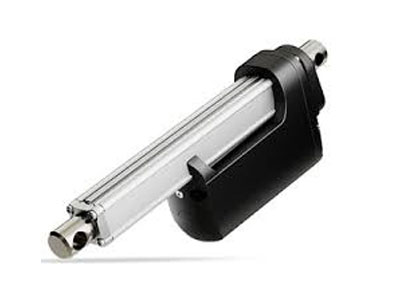What Is The Function Of Air Actuator?
Key Takeaway
The function of an air actuator is to convert the energy of compressed air or gas into mechanical motion. This motion is used to control or regulate components like valves, dampers, or other mechanical elements in a system.
Pneumatic actuators are widely used in industries such as manufacturing, construction, and transportation. There are different types of pneumatic actuators. Rotary actuators create rotational movement and are known for their durability. Diaphragm actuators produce linear motion using a flexible diaphragm, often in valve control. Double-acting actuators have air ports at both ends of the piston, allowing it to move in both directions. These actuators are popular due to their reliability, speed, and cost-effectiveness.
Introduction to Air Actuators and Their Role
Air actuators serve as the muscle of pneumatic systems, transforming compressed air into usable motion. They are widely used in applications where simplicity, reliability, and speed are essential.
Unlike hydraulic actuators that use liquids or electric actuators that rely on motors, air actuators leverage the clean and readily available energy of compressed air. This makes them ideal for environments that demand low maintenance and high safety standards.
Their primary role is to provide linear or rotary motion, enabling tasks such as opening and closing valves, lifting objects, or moving conveyor belts. Whether used in automated machinery or robotic systems, air actuators ensure consistent and repeatable performance, which is critical for industrial operations.
The ability of air actuators to deliver precise motion control with minimal energy consumption underscores their importance in modern automation.

How Air Actuators Generate Motion Using Compressed Air
The working principle of air actuators revolves around the use of compressed air to create force and motion. Here’s a step-by-step breakdown of the process:
Compressed Air Input: An air compressor generates and delivers pressurized air into the actuator.
Internal Mechanism Activation: The compressed air pushes against internal components like pistons or diaphragms.
Motion Creation: The force exerted by the air causes the actuator to produce linear or rotary motion, depending on its design.
Linear Actuators: Use pistons to create straight-line motion, ideal for pushing, pulling, or lifting tasks.
Rotary Actuators: Utilize air to rotate components, suitable for applications like valve control or robotic arm movement.
The responsiveness of air actuators allows for precise control, with flow control valves and regulators fine-tuning the speed and force of motion. This adaptability makes them a go-to solution for applications requiring both power and precision.
Applications of Air Actuators in Industrial Automation
Air actuators are indispensable in industrial automation, powering various machines and processes that demand efficiency and precision. Their versatility allows them to adapt to a wide range of applications:
Manufacturing: Used in assembly lines to move parts, clamp components, or press materials together, ensuring high-speed production with minimal errors.
Material Handling: Air actuators control conveyor belts, pick-and-place systems, and robotic arms, streamlining the movement of goods in warehouses and factories.
Packaging: In the packaging industry, they enable tasks like sealing, labeling, and filling containers, maintaining consistency in high-volume operations.
Automotive: Actuators assist in processes such as welding, painting, and component testing, ensuring precision and safety in vehicle manufacturing.
The adaptability of air actuators to different industrial settings highlights their role in driving automation, enhancing productivity, and reducing human intervention.
Benefits of Using Air Actuators Over Other Types
Air actuators offer several advantages that make them preferable to hydraulic or electric counterparts in specific applications.
Simplicity: Pneumatic systems are straightforward in design, requiring fewer components, which reduces installation and maintenance costs.
Safety: Compressed air is non-flammable and safe to use in hazardous environments, making air actuators suitable for industries like oil and gas or chemical processing.
Speed: Air actuators provide rapid motion, making them ideal for high-speed applications such as packaging and sorting.
Cost-Effectiveness: Compared to hydraulic systems, pneumatic systems are less expensive to operate and maintain, particularly in applications with moderate force requirements.
Clean Operation: The absence of hydraulic fluids ensures clean operation, a critical factor in industries like food processing and pharmaceuticals.
These benefits make air actuators a practical and efficient choice for industries prioritizing safety, speed, and low operational costs.
Key Features That Define the Efficiency of Air Actuators
Several features contribute to the efficiency and reliability of air actuators:
Material Durability: High-quality materials, such as stainless steel or anodized aluminum, ensure longevity, especially in harsh environments.
Precision Control: Flow control valves and pressure regulators allow for fine-tuning of motion, enabling accurate and repeatable operations.
Energy Efficiency: By optimizing air pressure and flow, pneumatic systems minimize energy consumption while maintaining performance.
Low Maintenance: With fewer moving parts and no reliance on fluids, air actuators require minimal upkeep, reducing downtime.
Environmental Compatibility: Designed to operate in extreme temperatures, moisture, or corrosive conditions, air actuators are versatile and reliable in challenging environments.
By incorporating these features, air actuators deliver consistent performance, making them a cornerstone of industrial automation and machinery.
Conclusion
The primary function of an air actuator is to convert compressed air into motion, driving automation, precision, and efficiency across various industries. From manufacturing to material handling, air actuators simplify complex tasks while ensuring safety and reliability.
For engineers, understanding the operation and benefits of air actuators is essential for optimizing system performance and achieving operational excellence. These devices continue to play a pivotal role in advancing industrial automation and technology.
